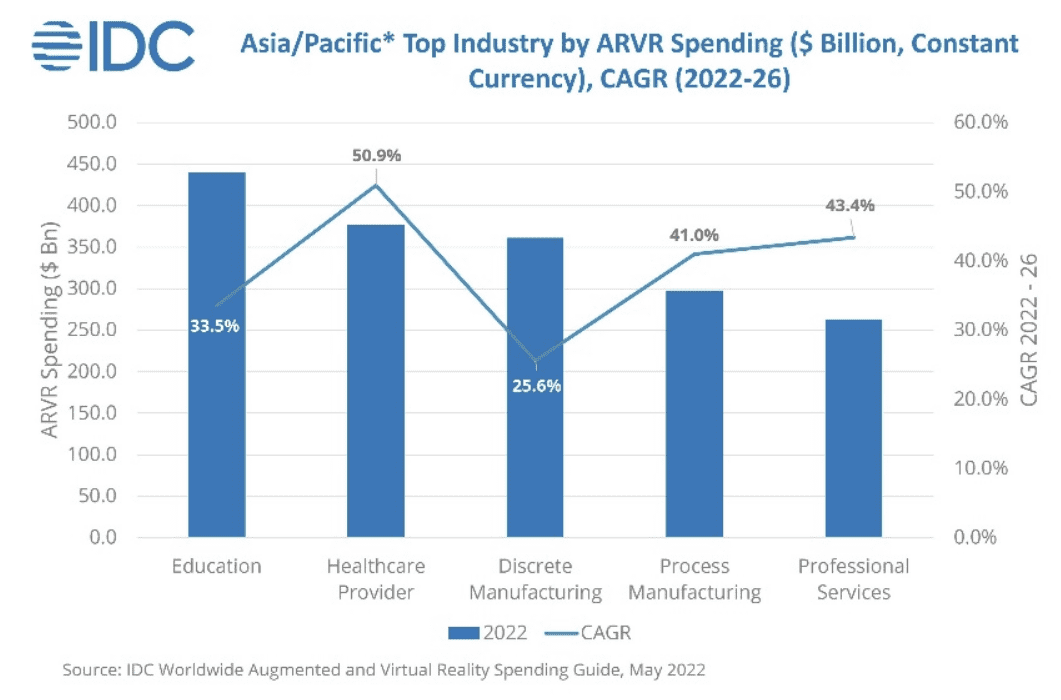
Source: wire19.com
According to IDC’s Global Augmented and Virtual Reality Spending Guide, Asia/Pacific (ex-Japan) (APeJ) spending on augmented reality and virtual reality (AR/VR) technologies is expected to grow at an annual growth rate CAGR of 42.4% (2021-26) and may reach $16.6 billion by 2026.
The growth of investment in AR/VR technology is driven by the penetration of the first wireless strategy among companies, industries and public sector organizations. However, there is a lack of consumer-friendly AR/VR technology from a retail consumer perspective that is expected to change in the coming years. With vendors willing to enhance virtual reality glasses and augmented reality for glasses and smartphones to disrupt augmented audio technology, the consumer market will see promising growth opportunities.
“The impressive market growth for AR/VR technologies is driven by organizations’ demand for a new immersive experience in the way they do business and interact with customers and employees. But vendors must also respond to consumer AR/VR applications so they don’t miss out on high-growth opportunities in the coming years.” He says Dr. Lily Phan, Research Director for the Future of Work, IDC Asia/Pacific.

According to IDC, the top spending industries (education, healthcare, discrete manufacturing, process manufacturing, and professional services) accounted for 65% of 2022 spend for business use cases among the 19 industries covered by it.

Training was the top priority for investment among the five industries shown above. In 2022, 60% of investment was captured by the top five use cases, of which training captured the largest revenue share and grew 44.7% from 2021. Along with collaboration, in 2022 it will capture a spending of 30.1%. The metaverse will act as a collaborative space for partners, employees, and customers. Virtual reality games are the biggest contributor to consumer industries due to their immersive experience that enhances the user’s sense of reality when gaming.
“Client agility is one of the main aspects driving investment in AR/VR technology. It helps improve the customer journey by offering an immersive experience.” He says abhik sarkarmarket analyst at IDC Asia/Pacific IT spending guides, customer insights and analysis.
By 2022, VR investments will contribute around 66% of the total market. The contribution is mainly due to the adoption of virtual reality games by consumers. By 2026, VR training and collaboration will see more investment in VR technology. Training, retail display and industrial maintenance will attract more investment in AR technology. For both AR and VR, the maximum investment in 2022 will be for hardware, followed by software and services. With this trend expected to remain the same from 2021 to 2026, hardware will grow at a CAGR of 48.1%, software at 47.1%, and 20.8% for services.
Also Read: Global Gesture Recognition and Contactless Sensing Market Outlook to 2027: Growing Importance of Gesture Recognition in VR Presents Opportunities – ResearchAndMarkets.com
Read More at wire19.com